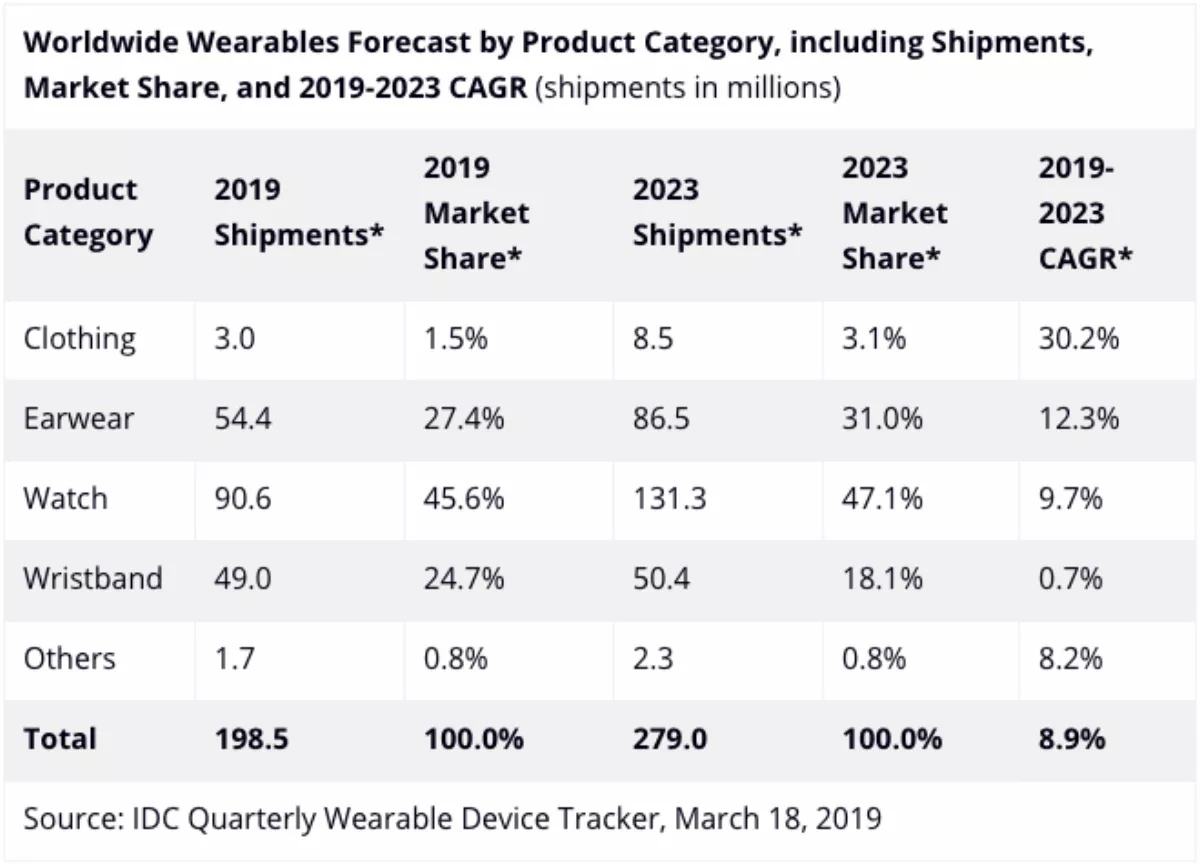
IDC: Innovative wearable use cases drive double-digit growth
The worldwide market for wearable devices, now inclusive of wireless headphones with smart assistants, is forecast to grow 15.3% over the previous year to 198.5 million units by the end of 2019, according to the International Data Corporation (IDC) Worldwide Quarterly Wearable Device Tracker.
Driving that growth will be the continued proliferation of watches, ear-worn devices, and wrist bands as well as further adoption in the healthcare segment.
"The rise of smart assistants on wearables, both wrist-worn and ear-worn, is a trend worth watching," says IDC mobile device trackers research manager Jitesh Ubrani.
"Though still in its infancy, the integration of these assistants with wearables opens up new use cases, from allowing these devices to tie into the smart home to making the devices more proactive at urging users to live healthier or more productive lives."
Looking ahead, the market is expected to reach 279 million units by the end of 2023 with a compound annual growth rate (CAGR) of 8.9%.
"Two major drivers for the wearables market are healthcare and enterprise adoption," says IDC wearabes team research director Ramon T. Llamas.
"Wearables stand to play an important role in digital health, constantly collecting important patient data while also giving patients the ability to self-monitor. Within the enterprise, wearables can help to accelerate companies' digital transformation by transmitting information back and forth while allowing workers to complete their tasks faster. This is where both vendors and companies can streamline processes to achieve faster results."
Watches accounted for 44.2% of the entire wearables market in 2018 and its share is anticipated to grow throughout the forecast, reaching 47.1% in 2023.
Smartwatches from Apple will undoubtedly lead the way and despite increasing competition from watches running forked versions of Android as well as Wear OS, WatchOS will account for 27.5% of all watches in 2023.
Other than smartwatches, hybrid watches and simpler kids' watches will also continue to grow albeit at a much slower pace.
Earwear, also referred to as hearables and ear-worn devices, will be the second largest category of wearables in 2023 with 31% share.
The inclusion of biometric sensors and the adoption of smart assistants will help drive this category forward throughout the forecast.
Wristbands, once the most popular form factor, will experience flat growth with a CAGR of 0.7%.
Meanwhile, growth in terms of dollar value is expected to decline with a -4.1% CAGR during the same period as average selling prices drop from $51 in 2019 to $42 in 2023.
The market is already dominated by Chinese brands such as Huawei and Xiaomi, and IDC expects this to continue.
Connected Clothing will be largely comprised of step-counting shoes and similar devices.
To date, these types of products have mainly been popular in China but that is slowly changing as brands such as Nike and Under Armour make headway in other markets.
In the later years of the forecast, IDC expects to see more enterprise applications introduced as companies aim to monitor employees in hazardous situations.




